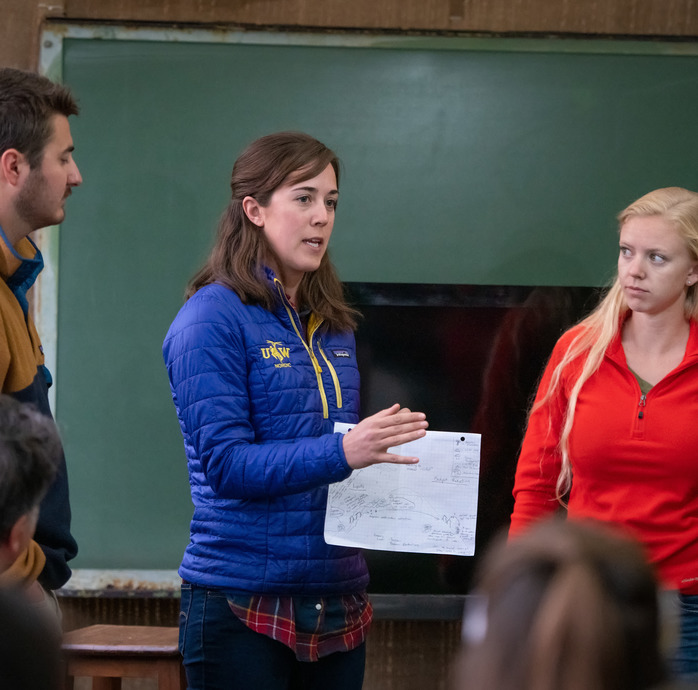Team-Based Learning (TBL)
Team-based learning (TBL) is a very highly structured form of group learning that provides students with resources to gain and practice with foundational skills and then apply those skills to authentic problem solving. It has two major phases: 1) the Readiness Assurance Process and 2) the Application Activities.
- Readiness Assurance Process
- Students engage individually with content or even reactivate skillsets prior to coming to class.
- Once in class, students show their readiness by taking an individual readiness assurance test (called the iRAT for short). While an iRAT is often multiple choice questions, there is flexibility to utilize other types of questions. On the iRAT, students are able to wager their points. For example, if two answers look equally correct to a student, she/he/they can wager half the points one question and half on the other. This feature of an iRAT allows students to practice self-assessment!
- After the iRAT is complete, students work with their team to complete the same set of questions together. This process, called the tRAT is completed using a form that allows immediate feedback (often an IF-AT card though the online Qualtrics survey tool can also be used for both iRAT and tRAT questions).
- Teams are allowed a short period of time to write an appeal for missed questions.
- Using the iRAT and tRAT responses, instructors can then do a mini lecture to address common areas of confusion. I often utilize the time during which students are completing their tRAT to review common areas of confusion on the iRAT. For my online classes, I can review the iRAT responses as they are submitted on Qualtrics. This allows me to address questions and areas of confusion prior to students working in their teams to complete tRATs!
- Application Activities
- The majority of class time is then spent engaging in authentic problem solving. In TBL, this problem-solving is highly structured by the 4S Framework. The 4Ss stand for: Significant Problem, Same Problem, Specific Choice and Simultaneous Report.

There are some important best practices when implementing TBL. First, the student teams stay the same throughout the semester. This enables the team to form a community that often lasts well beyond the end of the term. I also suggest training this team in Collaborative Communication so that they begin their work together using principles of democratic dialogue. While many variations can be made in TBL, there are some aspects that should be retained. The individual readiness component of TBL is essential, and while the iRAT can take many forms (e.g. writing reflections, drawing or telling a story), it is the iRAT that enables the instructor and learning assistants to know the level of individual student understanding. Student voices are not heard equally in team activities but that does not mean that their contribution is not equitable. The iRAT helps instructors see what often goes unseen. In the 4S phase, it may not be necessary to give students a specific choice. This “S” derived from large medical and pre-medical classes. However, the Significance and Sameness (or at least equivalent outcomes form) of the problem are important. Problems that are not perceived as meaningful to students will rarely garner engagement. I use a variation of the 4S phase in my in my Biological Chemistry course. To give one example, after students learn about the chemistry of water, and complete the iRAT and tRAT, they research a water pollutant. They are required to integrate at least four concepts from their earlier learning into a presentation, built on a Padlet, that reports out on their chosen pollutant!
In this writing, Dr. Michele Larson shares about how she has made TBL her own.

Resources and References
I have created a vodcast that provides additional information about TBL: https://youtu.be/IVCLYVF7tII
Sibley, J. and Spiridonoff, S. (n.d.) Introduction to Team-based Learning. The University of British Columbia Faculty of Applied Science. I have made this available: https://www.uwyo.edu/science-initiative/lamp/active-learning-spectrum/_files/documents/intro_to_tbl.pdf
Please check out Kayla Burd's Coffee & Curriculum session on TBL:
